Let’s face it, B2C marketing is like the cool kid at school. The quarterback, who’s the big man on campus and dating the head cheerleader. It’s always doing something new and exciting, and everyone wants to be friends with it.
But B2B marketing? It’s more like the math geek. Really smart, but has a hard time talking to people and usually gets left out.
What if I told you that there’s one simple concept that could change this? A concept that once you understand it, can give your B2B marketing a glow-up that would put any 90s teen movie makeover montage to shame!
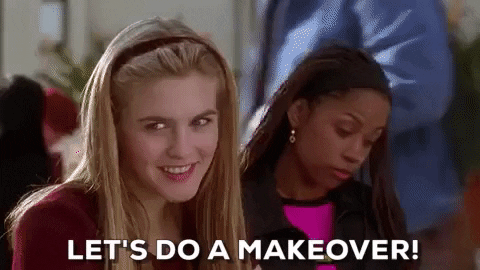
You see, it’s all about understanding the lifecycle of a marketing tactic. And I’ve got just the graph to show you how it works.
If you prefer to watch vs. read, check out our video explaining things instead.
Ok, let’s break it down…
The Lifecycle of a Marketing Tactic
This curve shows a marketing tactic’s level of effectiveness over time.
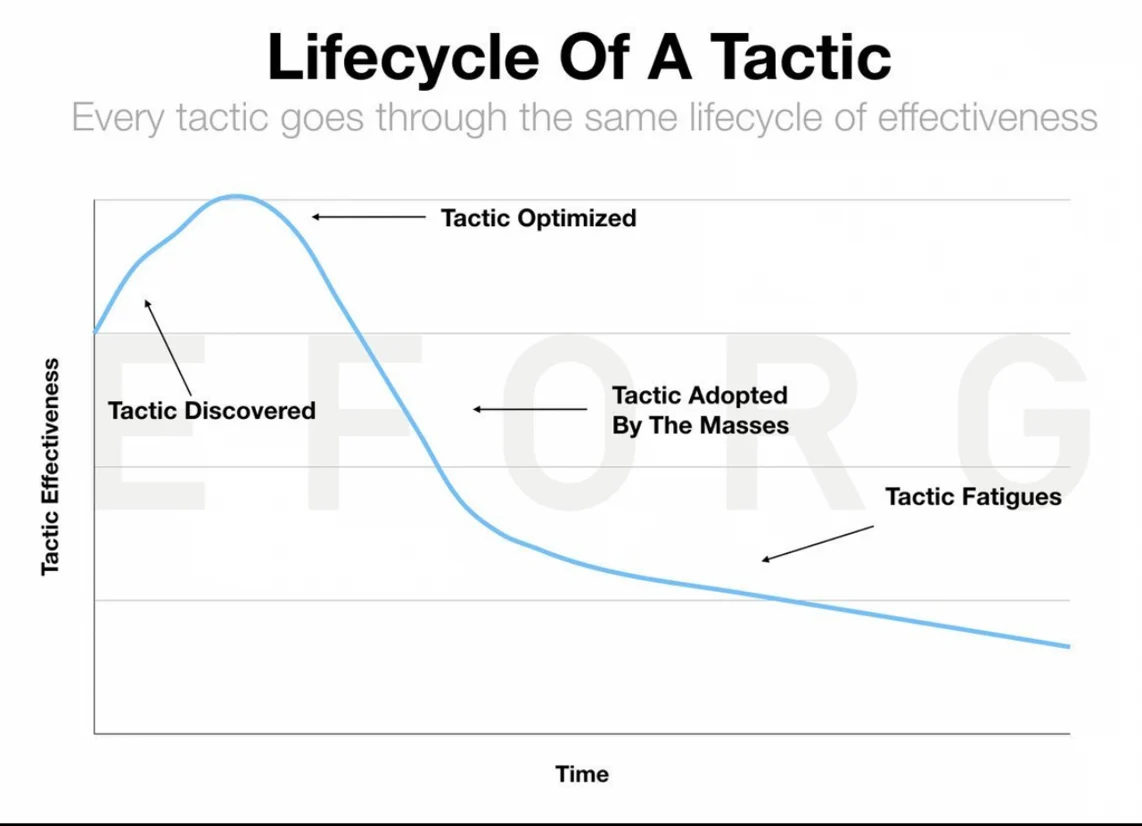
Discovery
In the beginning, you have a new tactic that’s being discovered. During this period, people are figuring out how to use it and its effectiveness is increasing.
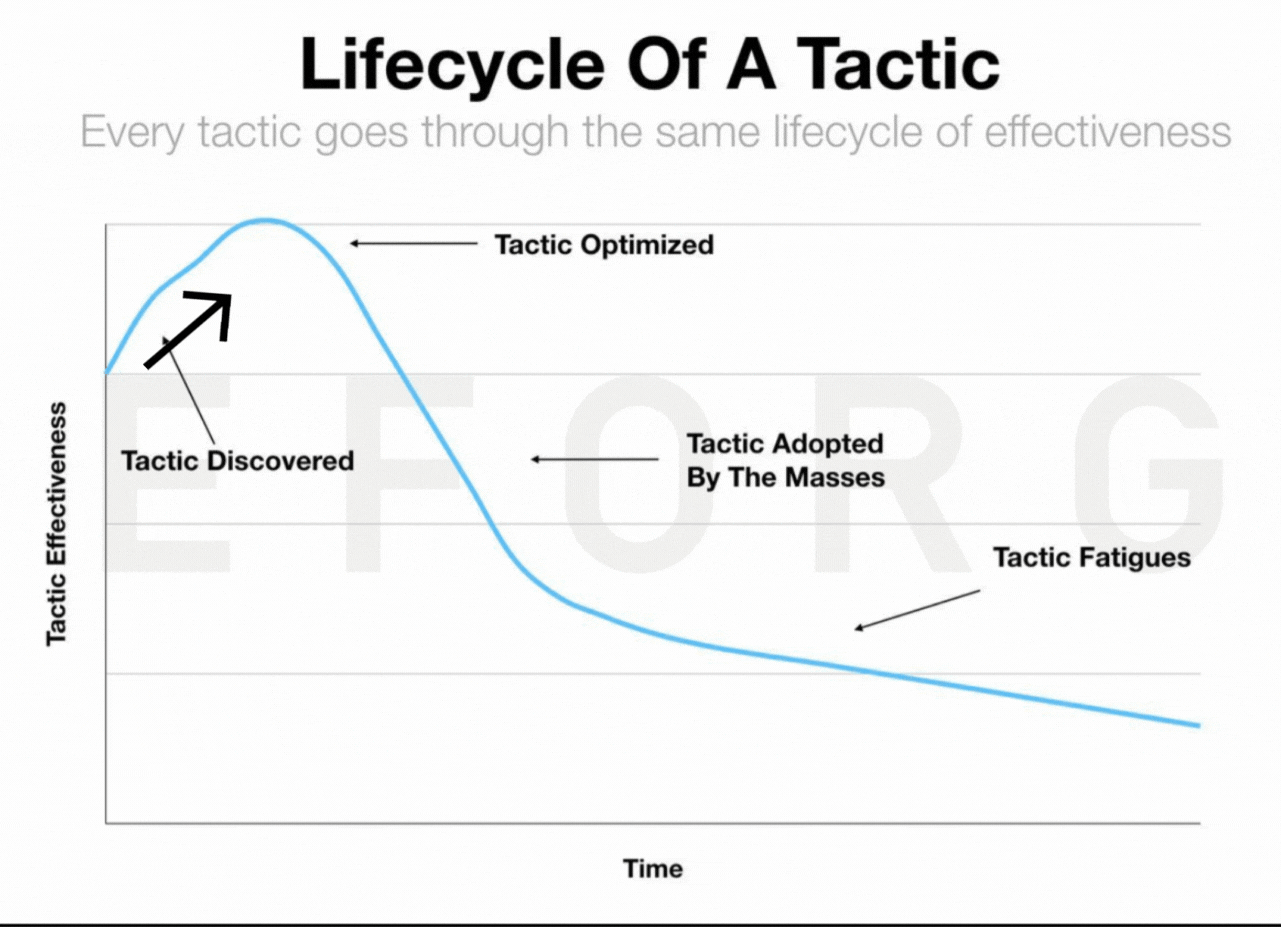
Optimization
Pretty quickly, the tactic peaks in effectiveness, and this is when it’s considered ‘Optimized.’ In other words, brands have figured out exactly how the tactic works, are using it really well, and getting killer results because of it.
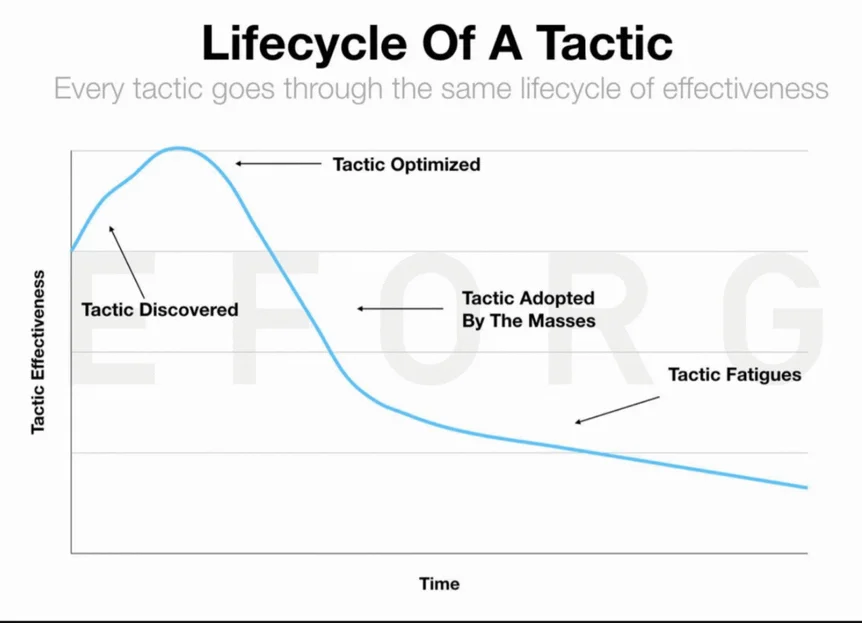
Decline
But it’s from here that the effectiveness of the tactic starts to decrease.
Why? Because other brands are starting to see the wins that early adopters are having, and they want a piece of the action.
So other companies start flocking to that tactic or that platform. And because the early adopter companies have done all the work of experimenting, now there’s usually a playbook that the new entry companies can utilize to start using the tactic effectively very quickly.
But here comes the problem. The tactic starts to be adopted by the masses. This means that competition increases a ton. It gets harder and harder to be the winner with the tactic. And so effectiveness declines.

Fatigue
And effectiveness continues to decrease over time until we get to what’s called ‘Tactic Fatigue.’ This is where the audience and brands get sick of and eventually abandon the tactic or the platform.
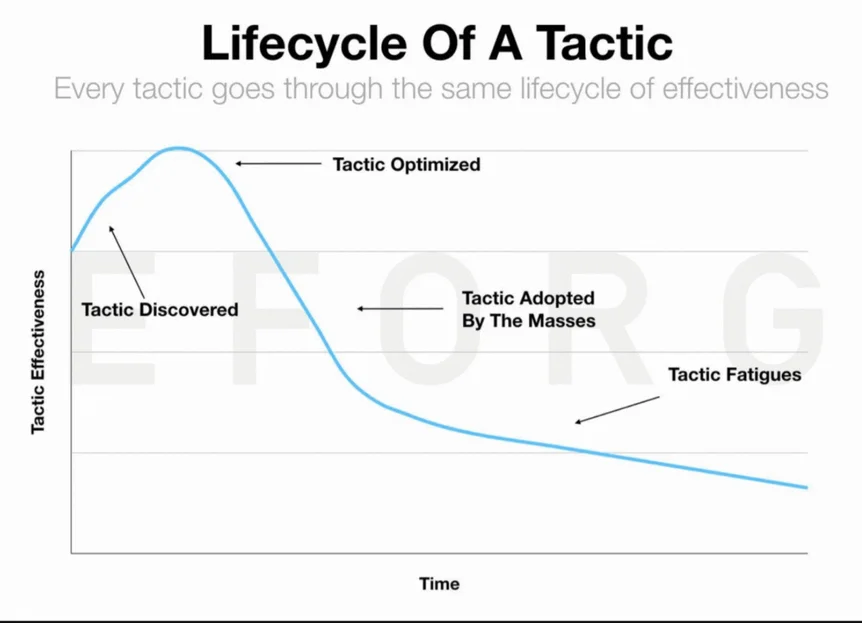
That’s how the curve works.
So why is B2B marketing boring?
Why does B2C marketing always seem cool, but B2B marketing always seems lame and boring? It’s because B2C brands do a really great job of understanding this curve and exploiting it. B2B brands don’t understand the curve at all.
B2C brands have this curve figured out. They’re constantly looking out for new tactics and platforms that they can jump on and ride the curve up.
B2B brands, on the other hand, they’re laggards. They tend to be 2-5 years behind B2C brands when it comes to their marketing.
So by the time B2B companies even start to think about using a tactic or a platform, we’re already near the bottom of the curve and it’s not very effective anymore.
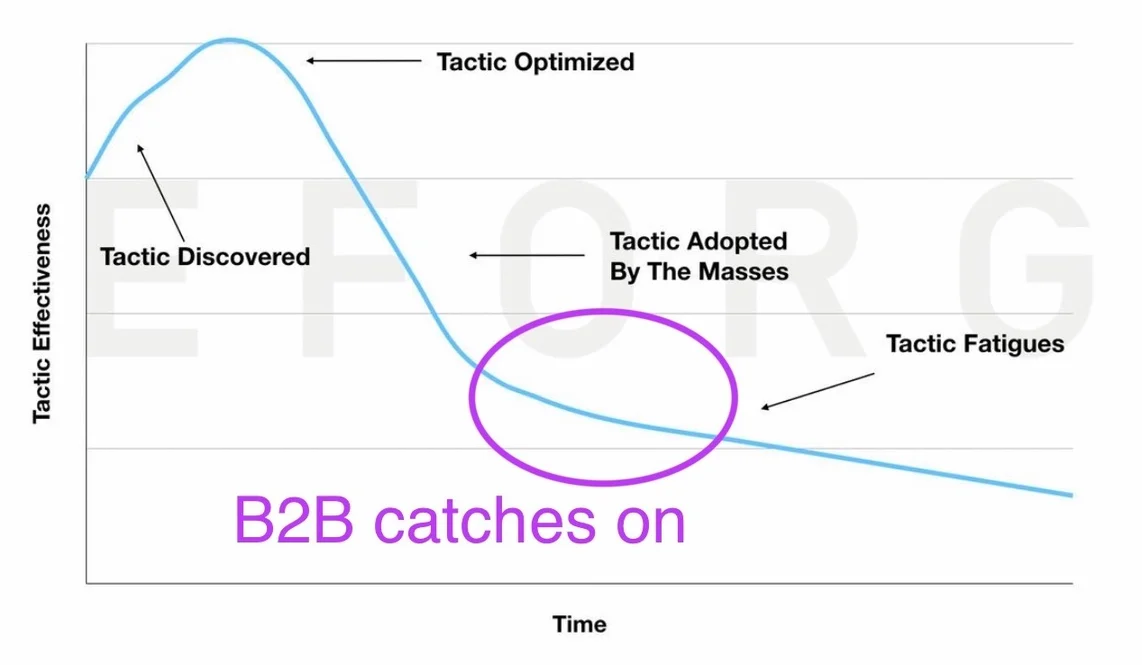
Meanwhile, B2C brands have already exploited the hell out of the tactic and they’ve already left it for the next big thing.
A Real-Life Example
I’ll give you an example of exactly how this curve is playing out on TikTok.
A couple of years ago, there’s a huge surge in the popularity of TikTok. A few B2C brands are able to get in early and really ride the wave up. Duolingo and The Washington Post are good examples. They figured out what worked. They did it over and over again, and they got really popular on the platform, quickly.
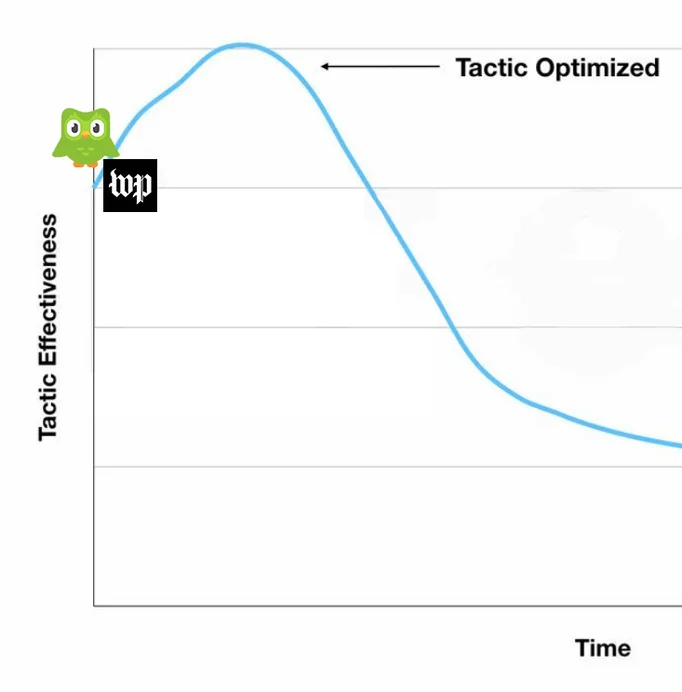
We’re past the optimization period and we’re starting to move towards a decline in effectiveness. This is backed up by the recent complaints from TikTok creators about the algorithm and the increasing difficulty of going viral on the platform.
That said, we’re quickly approaching the time when B2B brands are going to start to enter the space.
Your Opportunity
If you want your B2B marketing to feel interesting and engaging, take a page out of the B2C marketer’s book. Leverage the lifecycles of tactics. Constantly be on the lookout for new methods and platforms to spread the word about your brand.
If you can get in early, you’ll be a pioneer for that tactic. Yes, this requires experimentation. Yes, it’s more work. But early adopters have the most upside. They’re the ones that get to capitalize on the peak of a tactic’s effectiveness.
Pro tip:
Not sure where to begin? Watch what’s currently working for B2C marketers. Then steal their playbooks. You don’t have to beat the B2C brands. Just the other B2B brands.
If you keep your eyes and ears open, you’ll get all kinds of interesting ideas from B2C marketers. If you start executing these ideas now, you’ll still be months or maybe even years ahead of B2B competitors.
Long story short, save a screenshot of this curve and remember it. Start trying to be an early adopter. That way you can be a brand that rides the wave up versus the one that gets stuck down at the bottom of the curve.
Thanks for reading.
Drop us a line if you ever want to brainstorm ideas for interesting marketing tactics or platforms your B2B brand could start using. We’re marketing nerds so we always get excited to talk about this stuff.
Over and out!







